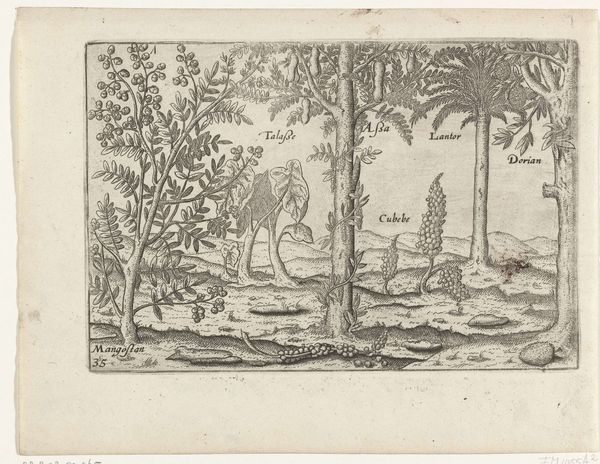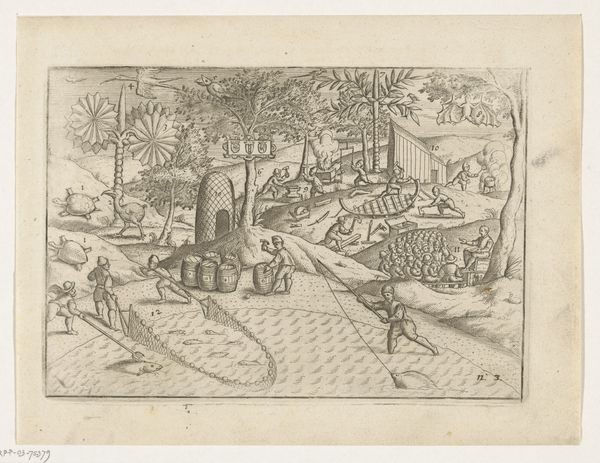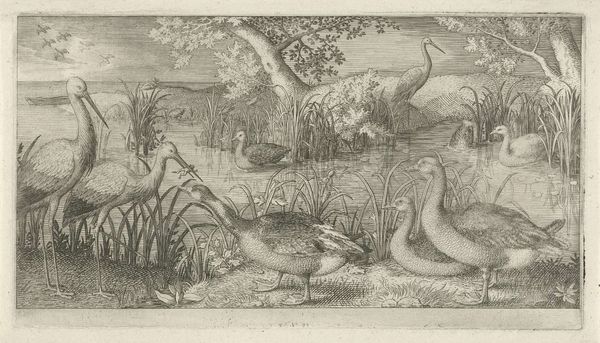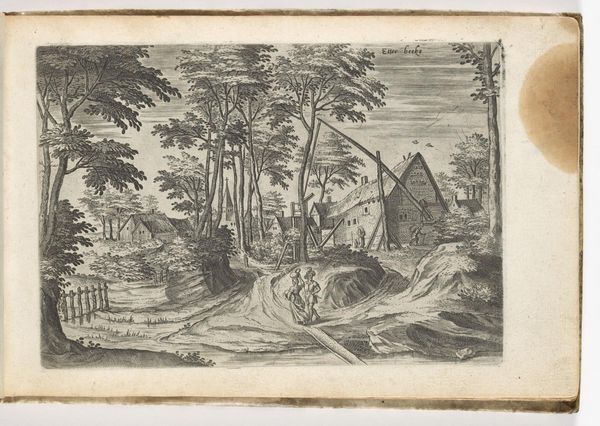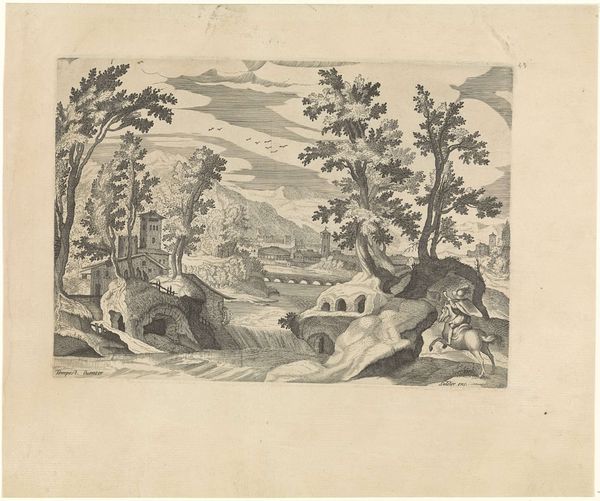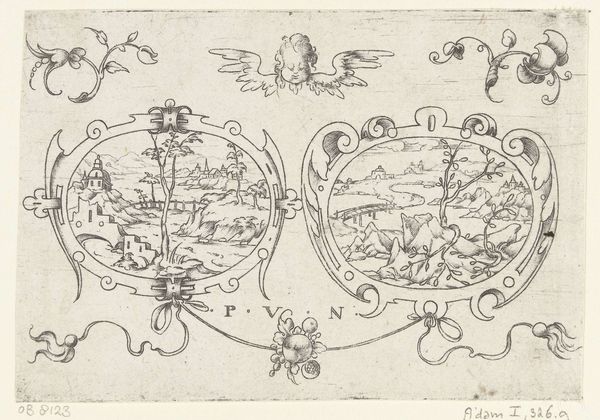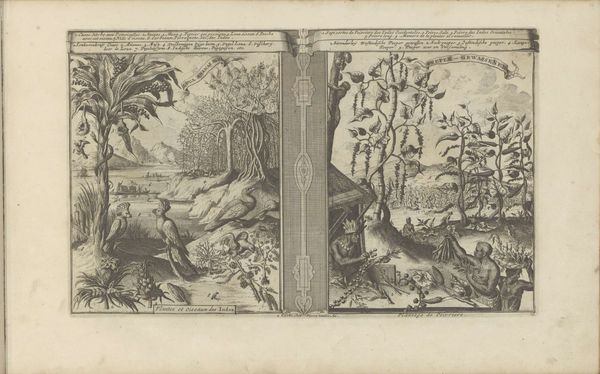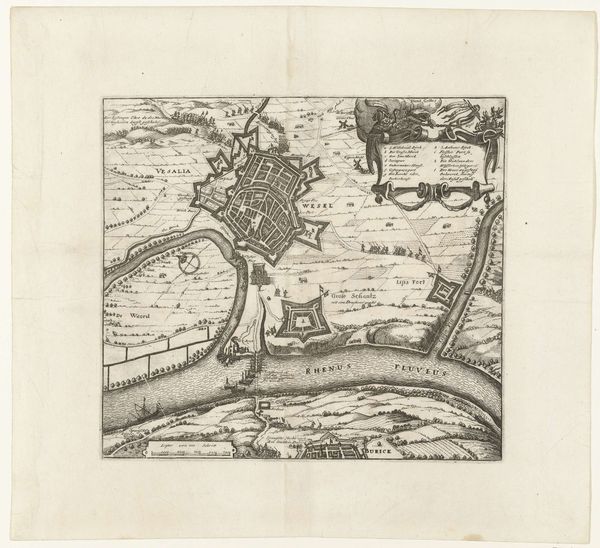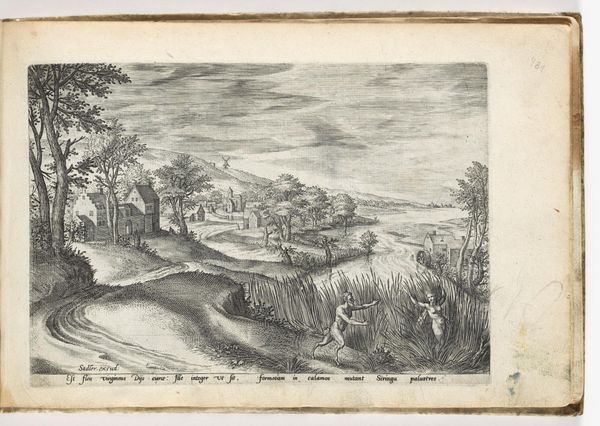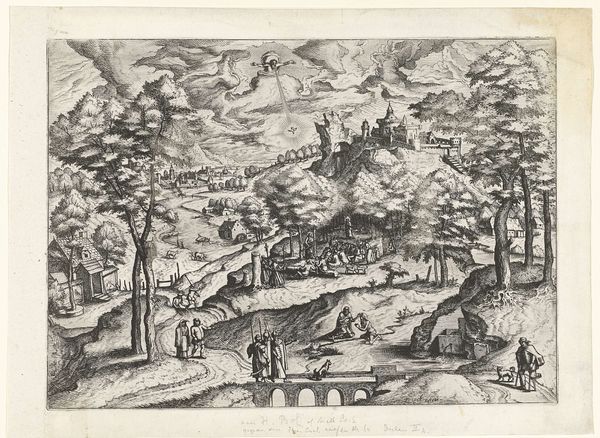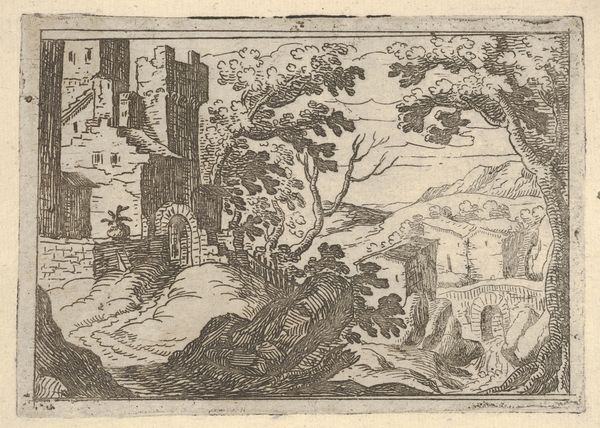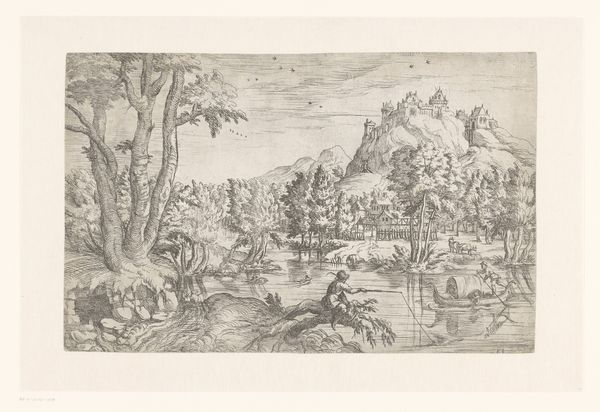
drawing, print, engraving
#
drawing
#
baroque
# print
#
old engraving style
#
landscape
#
cityscape
#
engraving
Dimensions: height 145 mm, width 220 mm
Copyright: Rijks Museum: Open Domain
Curator: At first glance, this feels like a world captured in miniature, almost a diorama frozen in time. Editor: Precisely. The work is entitled “Dorpen Spakenburg en S. Angero op Madagaskar, 1595,” an engraving offering a fascinating look at two villages in Madagascar through a European lens. The piece resides here at the Rijksmuseum and was created sometime between 1597 and 1646. Curator: The stylized composition speaks volumes. Two fortified settlements face each other across water, their protective walls perhaps indicating the relationship, or lack thereof, between the communities. Editor: It is intriguing, isn’t it? We see visual strategies of claiming territory and visualizing newly encountered societies, a sort of visual power dynamic taking shape in ink. Notice how the printmaker meticulously delineates dwellings and emphasizes protective structures, perhaps to demonstrate a fortified advantage. Curator: And the symbolic elements are strong – the odd botanical illustration bisecting the river could be read in numerous ways, either celebrating indigenous nature or subtly ‘dividing’ the terrain, demarcating separate domains. Editor: Or maybe highlighting the natural abundance they saw in the landscape, a land ripe for resource extraction. Engravings like this one circulated widely in Europe, constructing and perpetuating specific images of faraway lands for the public. Curator: Right, how such pieces shaped European perceptions is pivotal. Beyond its value as documentation, what cultural memories and meanings would these scenes evoke back in Europe? What narratives of trade, conquest, and perhaps also a little of an exotic unknown would this provoke in viewers of that period? Editor: Indeed. It acts almost as a cultural mirror reflecting European values and anxieties back onto a distant land. We interpret meaning based on those visual narratives and question the purpose for their intended audience, considering who controlled those narratives, what knowledge gaps emerge, and what stories are untold in this depiction. It forces us to engage in questions that have echoes even in our present moment. Curator: Thinking of visual power dynamics—indeed. Thank you; it feels as though it is never just ‘looking’ but constantly seeking a dialogue between then and now.
Comments
No comments
Be the first to comment and join the conversation on the ultimate creative platform.
